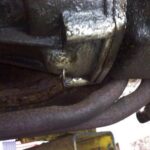The increasing prevalence of 48V electrical systems in vehicles and industrial applications has led to a growing demand for reliable and efficient 48v Relays. These relays play a crucial role in controlling high-power circuits, but switching reactive loads like inductive coils and capacitors presents unique challenges. This article delves into the intricacies of 48V relay selection and protection, exploring solutions for enhancing their performance and longevity.
Challenges of Switching Reactive Loads with a 48V Relay
Switching inductive or capacitive loads with a 48V relay can lead to significant contact degradation due to arcing and high transient voltages. When the relay contacts open, the collapsing magnetic field in an inductor generates a high voltage spike, causing arcing across the contacts. Similarly, switching a charged capacitor can result in a large inrush current, potentially damaging the relay contacts. This phenomenon is exacerbated by contact bounce, further increasing the wear and tear. This high voltage and current can damage the delicate plating materials (silver, platinum, etc.) on the relay contacts, especially with inductive loads where the temperature can exceed 5000’K during the inductive “on” and capacitive arc “off” cycles.
Fig 1: Example of Arcing in Relay Contacts (Source: Omron)
Protective Measures for 48V Relay Systems
To mitigate these issues and ensure reliable operation, various protective measures can be implemented:
Snubber Circuits:
Designing a snubber circuit tailored to the specific reactive load is crucial. For capacitive loads, Inrush Current Limiters (ICLs) can be employed to reduce the initial surge current. A secondary relay, activated above 85°C, can bypass the ICL once the capacitor is charged, extending the ICL’s lifespan. Inductive loads often benefit from snubber circuits using power Zener diodes in series with reverse diodes, or RC snubbers with low ESR metal film capacitors and carbon resistors to absorb transient energy.
MOVs and TVS Diodes:
Metal Oxide Varistors (MOVs) and Transient Voltage Suppressor (TVS) diodes offer alternative protection against voltage spikes. However, lower device resistance can prolong arc quench time (T = L/R), potentially creating other problems.
Coil Flyback Diodes:
While essential for suppressing voltage spikes generated by the relay coil itself, the low ESR of flyback diodes can slow down the opening of the contacts, extending the arc duration. Using a Zener diode with a voltage rating higher than the supply voltage (Vcc) in conjunction with the flyback diode can improve this response time.
Contactors for High Power Applications
For significantly higher power requirements, contactors, which are more robust and expensive relays, are the preferred choice. They are specifically designed to handle larger currents and voltages.
Considerations for 48V Relay Selection
Choosing the right 48V relay involves considering various factors:
- Load Characteristics: Understanding the specific reactive load characteristics, including inductance, capacitance, and voltage/current ratings, is essential for selecting the appropriate protection measures.
- MTBF Requirements: Defining the desired Mean Time Between Failures (MTBF) helps determine the necessary level of protection and relay quality.
- Lifecycle Costs: Balancing the initial cost of the relay and protection circuitry with long-term maintenance and replacement costs is crucial.
Fig 2: Example of a high-capacity relay (Source: Omron)
The Future of 48V Switching
As technology advances, solid-state switches with integrated protection features are becoming increasingly viable alternatives to electromechanical relays. When lifecycle costs justify the investment, these smart switches offer enhanced reliability and performance for 48V applications.
Conclusion
Effective management of reactive loads is paramount for ensuring the longevity and reliability of 48V relay systems. Implementing appropriate protection measures, such as snubber circuits, MOVs, and careful selection of flyback diodes, can significantly reduce contact wear and extend the operational lifespan of the relay. As 48V systems continue to proliferate, understanding these principles will be crucial for engineers and technicians working with these critical components.

